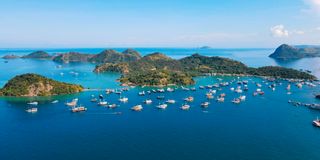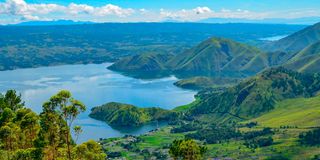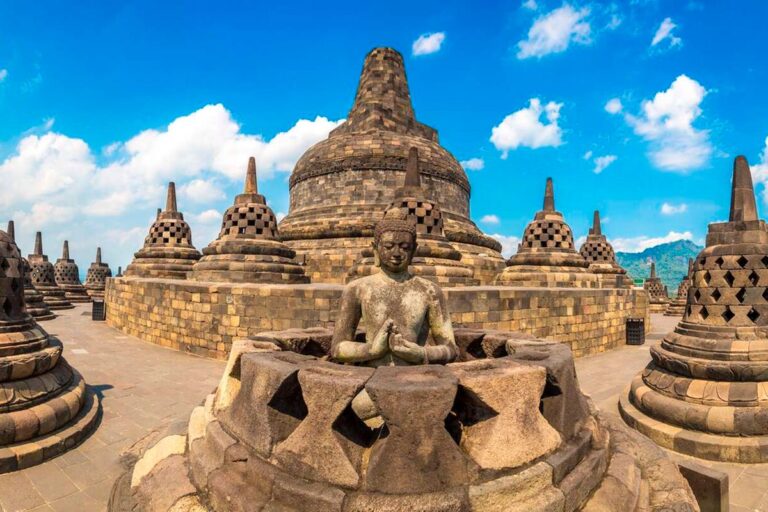Travelling to Indonesia for the for the first time, I knew only one major tourist destination; the famous Bali Island that is arguably the perfect vacation destination for its picturesque beauty.
I was curious to hear more about other destinations, and who better to ask than the person at the helm of marketing the country to visitors?
From the tranquil shores of Lake Toba in North Sumatra to the mesmerising underwater world of Mandalika, and the pristine landscapes of Labuan Bajo, Likupang, and Lombok, each of Ni Made Ayu Marthini’s destination recommendation carries a distinct allure, contributing to the diverse mosaic that defines Indonesia’s tourism landscape.
Labuan Bajo
Labuan Bajo is a town located on the western tip of the island of Flores, and is a gateway to various captivating attractions, such as the Komodo Island, which forms part of Komodo National Park, home to the world’s largest lizard; the Komodo dragon.
If you take a boat ride to Padar Island, you can experience a panoramic hike, where you get a chance to see three distinctly coloured beaches. You will get a chance to walk on one of seven pink (or red) beaches in the world. The sand gets its colour from a combination of shell fragments and marine life.

A panoramic landscape of Labuan Bajo Flores, Indonesia. PHOTO | SHUTTERSTOCK
When it comes to tradition, there is a cultural fighting ritual known as Caci, a traditional whip-fight performed by the Manggarai people, showcasing strength, agility and bravery. You can also indulge your taste buds with a bowl of sombu (a rice substitute made by combining corn and coconut), alongside other foods.
Ms Marthini notes that there are plans to upgrade a recently built airport in Labuan Bajo to international standards. Accommodation charges for a night for two adults in a double room range from Sh2,900 to Sh20,000.
Lombok
This island neighbouring Bali in the east, is known for its rich cultural heritage, especially in the Mandalika region. It is also home to a moto gp world circuit, voted as one of the most beautiful in the world. This is because the circuit has an incorporated batik pattern, (traditional Indonesian fabric resembling the Kenyan kitenge), done in predominant red and white patterns to represent the traditional ikat motif of the Sasak people.
The island is also home to villages such as Sade, Ende and Sukarara, known for their production of woven songket fabrics. Their designs incorporate motifs inspired by nature, such as tumpal (bamboo shoots), representing a row of mountains symbolising Dewi Sri (the goddess of rice and fertility). Visitors to these tourist villages can witness and even get to try their hand at the intricate process of weaving, guided by the skilled artisans.
The region also has a fighting ritual of its own, where two men fight each other armed with canes and shields. It originated as a symbol of joy and emotional release for Lombok warriors after successful battles.
Accommodation starts from as low as Sh1,900 to a private one-bedroom villa at Sh86,000 a night.
Borobudur Temple
Built during the 9th century under the Sailendra dynasty, this ancient marvel built with intricate interlocking blocks, is the world’s largest Buddhist temple. The temple located in Central Java consists of nine stacked platforms with a central dome at the top, and has 2,672 relief panels covering a total area of 2,500 square metres, as well as 504 Buddha temples.
These relief panels depict various Buddhist teachings as well as daily life and cultural aspects of ancient Java. The ascending levels of the temple represent the spiritual journey towards enlightenment. Throughout history, the temple has been regarded as a sacred site for pilgrimage and religious celebrations.
Borobudur is a Unesco World Heritage site, and a popular tourist destination. There are two main entrances designed for sunrise and sunset viewing, and doors open as early as 4 am.
Lake Toba
This lake in North Sumatra holds the distinction of the world’s largest volcanic lake spanning 1,145 square kilometres and reaching a maximum depth of 505 metres. It is also the largest in Southeast Asia, and the second largest in the world after Lake Victoria. An island called Samosir found in the middle of the lake is 1.5 times bigger than Singapore.

Danau Toba in North Sumatera, Indonesia. PHOTO | SHUTTERSTOCK
The Batak people who call this place home, are known for the Sigale-gale dance dressed in traditional woven wear, as well as for following a matrilineal system. As such, women hold significant roles in family and community decision-making, with households often led by the eldest female. This sheds a light on gender dynamics and power relations within Batak communities.
The region has breath-taking coffee and tea plantations and plays host to speed boat competitions. The region has also been undergoing development, with two new airports. Prices range from Sh2,000 to Sh45,000 for a night.
Likupang
Nestled in North Minahasa in the North Sulawesi province, Likupang is home to the Minahasan people. Besides the sandy beaches synonymous with a lot of destinations in Indonesia, you can go diving in the Bunaken National Marine Park. You can also venture out to the Mahawu volcano for a panoramic view of the surrounding landscape.
Likupang has a dense mangrove ecosystem, spanning 1,473 hectares. There are reported frequent sightings of dugongs (also known as sea cows), drawn to the calm currents and abundant sea grasses that serve as their feeding grounds.
Distinctive cultural arts in Likupang include the music of the Kolintang, which features traditional Minahasan instruments taught to children from an early age, the Kabasaran dance, as well as dishes such as traditional Manadonese porridge and smoked tuna.
Accommodation charges range Sh2,000 to Sh26,000 for two adults in a shared room, per night.

